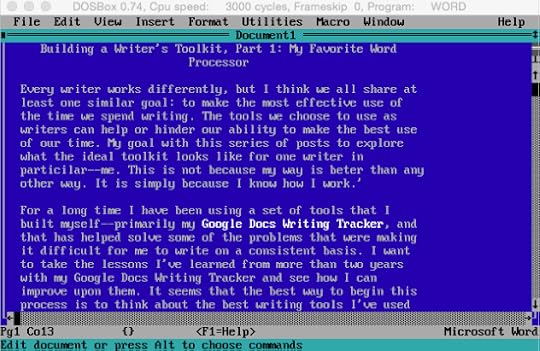The Systematic Problem of Building Productivity Systems
I have this terrible propensity to build up systems because the systems offered off-the-shelf seem inadequate for my needs. When I used Evernote, I couldn’t just use it “off-the-shelf” so to speak, I had to build systems around it. When I started using Obsidian, I did the same. In the days when I wrote in Google Docs, I had to build out an elaborate system for tracking my writing. I never really stopped to wonder why I feel the need to build up these systems. But I have often asked myself why the off-the-shelf products aren’t good enough for me.
The answer to the first question—why I feel the need to build up these systems in the first place—is more about the challenge and less about the benefits than I like to admit. I build software systems for a living, so why not take advantage of that skillset? On the one hand it consumes countless hours that I could spend on other things; on the other hand, it hones my skills. This probably explains why I move from system to system. Once I’ve built up my system, the fun part is over. Using the system, the practical part is, well, boring. I find another system to build and see how I can improve based on lessons I learned the last time around.
The answer to the second question is simpler: in 99.9% of the cases, the off-the-shelf product is good enough for me, but I choose to complicate things.
Recently, I built up another big system—my personal archive system (PAS for short)—that has finally let me step back and assess my use of systems in general. The PAS does a lot of what I’ve wanted with respect to archiving and searching my documents in the way I want it done, and in doing so, has freed me up to use software off-the-shelf, without feeling compelled to tweak it, or integrate it, or use it in a way it wasn’t designed to be used.
Recently (thanks to my PAS!) I was looking at some old documents—college course notes and papers I’d written, some of the oldest computer files I still have, dated from 1993 and 1994. I wrote these papers and typed up my notes in Microsoft Word for DOS 5.5, which today, remains my favorite of all the word processors I’ve ever used1. I thought about those college days. No one had laptops. These were pre-internet days. I sat in lectures and scribbled notes in a notebook using a kind of shorthand that evolved over time. Later, I’d sit at my IBM PC 286, fire up Word for DOS, and type up my notes. When it came time to write a paper, I’d open a new file and start writing. I didn’t worry about formatting beyond 1-inch margins and double-spaced text. I just typed and saved.
 Word for DOS 5.5.
Word for DOS 5.5.In the grand scheme of things, not much has changed. All I really need to do these days is type—for the most part, things are saved automatically for me. I don’t need to worry about formatting. Templates take care of that for me. I don’t need an elaborate system—my PAS is that system and it automates those things I’ve always wanted to have so that I don’t even have to think about it. The system is working so well, in fact, that I haven’t touched the code in two months.
Indeed, the PAS has allowed me to simplify my systems. I’ve written this most recent sprint of posts (the last 14, including this one) in Microsoft Word in a simple template without worrying about other systems or automations. When I finish a post, I use an LLM to proofread it and find my typos—but I correct them myself and occasionally ignore suggestions. I copy and paste the text into WordPress, which handles all the formatting. And you know what? Not using an elaborate system is freeing. It is, in fact, a relief! It feels like the old days, before I was aware of personal productivity trends, and I spent my time being productive, instead of spending it building systems to make me productive.
My use of word processors goes back to AppleWorks, sometime in the mid-80s. ︎
︎Did you enjoy this post?
If so, consider subscribing to the blog using the form below or clicking on the button below to follow the blog. And consider telling a friend about it. Already a reader or subscriber to the blog? Thanks for reading!



